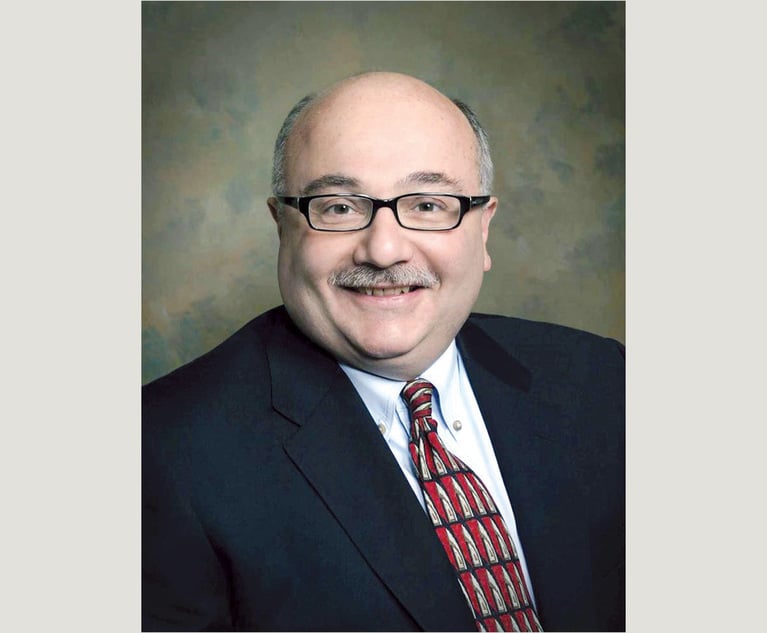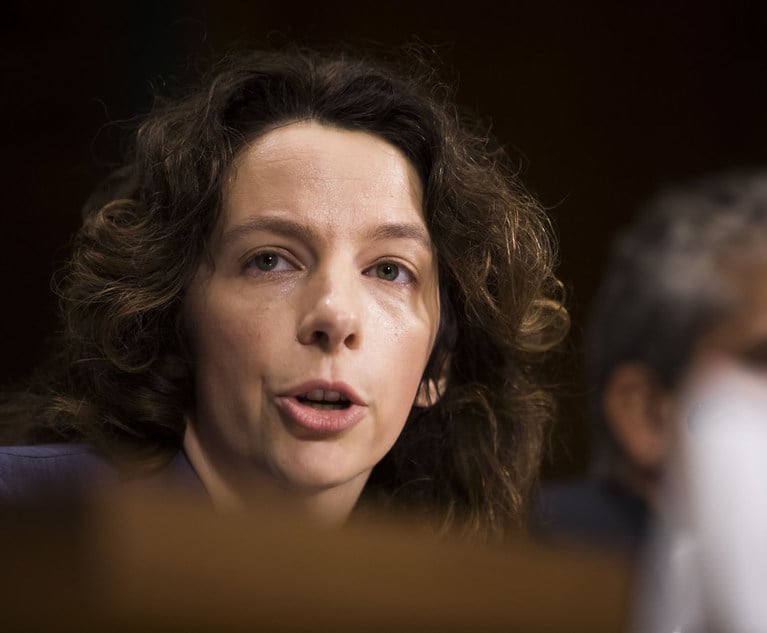Russian Intrigue Meets the Hearsay Rule
In their Southern District Civil Practice Roundup, Edward M. Spiro and Judith L. Mogul write: On May 12, 2017, the United States settled its asset forfeiture and money-laundering case against Prevezon Holdings just days before that case was scheduled to go to trial, with both sides claiming the $5.9 million settlement as a victory. The facts behind 'U.S. v. Prevezon Holdings' were the stuff of spy novels, but the far from headline-grabbing questions concerning application of the hearsay rule to foreign records the government intended to introduce at trial also led to a hearsay analysis of note.
August 14, 2017 at 02:03 PM
10 minute read
On May 12, 2017, the United States settled its asset forfeiture and money-laundering case against Prevezon Holdings just days before that case was scheduled to go to trial, with both sides claiming the $5.9 million settlement as a victory. The facts behind United States v. Prevezon Holdings, 319 F.R.D. 459 (S.D.N.Y. 2017), were the stuff of spy novels, involving an alleged elaborate Russian tax fraud, a web of supposed money laundering involving multiple shell companies and international bank accounts, and the death in prison of Sergei Magnitsky (after alleged mistreatment), a Russian lawyer investigating the facts surrounding the tax fraud. Indeed, efforts of Prevezon's Russian lawyer, Natalia Veselnitskaya, during last year's Presidential campaign to have sanctions named for Magnitsky lifted, in part through a meeting with members of the Trump campaign, only added to the drama surrounding this case. Just days before the case settled, Judge Willian H. Pauley III, who was to preside over the trial, issued a decision on a motion in limine filed by the government, addressing interesting, albeit far from headline-grabbing questions concerning application of the hearsay rule to foreign records the government intended to introduce at trial. Although that trial now will not take place, the hearsay analysis is worthy of note, and we discuss Judge Pauley's decision below.
'U.S. v. Prevezon'
The government's case against Prevezon turned to a substantial extent on the government's ability to trace funds linked to the alleged Russian tax fraud into the accounts of Prevezon and the other defendants. The government needed various bank records to establish the movement of funds between the accounts in question, but the Russian Federation declined to provide those records, leaving the U.S government lawyers with a series of evidentiary hurdles to overcome. The government had access to copies of those records which were contained in two sets of files: a Russian criminal case file generated during prosecution of the Russian tax fraud, and a file from a Russian arbitration proceeding that was also connected to that scheme. The bank records in the criminal case file consisted of records produced by certain banks accompanied by transmittal letters identifying the documents as bank records and bearing the banks' official seals (the Attested Records), and records seized by Russian officials during raids of certain financial institutions (the Seized Records). The motion in limine sought to overcome the hearsay obstacles posed by trying to admit copies of bank records contained in the criminal and arbitration case files, none of which could be authenticated by traditional means.
As a threshold matter, Judge Pauley accepted the government's argument that the criminal case file could be admitted for non-hearsay reasons, because some of its contents constituted “verbal acts with legal significance,” or contained “telltale errors and irregularities that indicate fraud and corruption.” 319 F.R.D. at 462. He concluded that the government could authenticate the Russian criminal case file through the videotaped testimony of a Russian lawyer that he had photographed those records in a Russian courthouse under supervision of court clerks, and through the testimony of an agent from the Department of Homeland Security who could establish that the hard drive to be used to present the file at trial contained accurate copies of the photographed records. Id. at 463. Judge Pauley went on to hold that the arbitration file could be authenticated under Federal Rules of Evidence 901(b)(3)1 or (4)2 through comparison with the criminal case file, with which it shared certain distinctive characteristics.
Admission of the bank records contained in the two case files posed greater evidentiary challenges, because the government sought to admit them for the truth of their contents—as “accurate depictions of relevant bank account activity” reflected in those records. On its motion in limine the government relied on three exceptions to the hearsay rule in support of their admission: the foreign business records exception contained in Rule 803(6) for admission of the Attested Records; the public records exception in Rule 803(8) for admission of the Seized Records; and the residual hearsay exception under Rule 807 for admission of both sets of records.
This content has been archived. It is available through our partners, LexisNexis® and Bloomberg Law.
To view this content, please continue to their sites.
Not a Lexis Subscriber?
Subscribe Now
Not a Bloomberg Law Subscriber?
Subscribe Now
NOT FOR REPRINT
© 2025 ALM Global, LLC, All Rights Reserved. Request academic re-use from www.copyright.com. All other uses, submit a request to [email protected]. For more information visit Asset & Logo Licensing.
You Might Like
View All
Decision of the Day: District Judge Vacates Magistrate's Ruling to Disqualify Prosecutors in Kidnapping Case


Decision of the Day: Judge Precludes Ballistics Expert's Opinion on Scene for 2016 Fatal Police Shooting
Trending Stories
- 1Decision of the Day: Judge Dismisses Defamation Suit by New York Philharmonic Oboist Accused of Sexual Misconduct
- 2California Court Denies Apple's Motion to Strike Allegations in Gender Bias Class Action
- 3US DOJ Threatens to Prosecute Local Officials Who Don't Aid Immigration Enforcement
- 4Kirkland Is Entering a New Market. Will Its Rates Get a Warm Welcome?
- 5African Law Firm Investigated Over ‘AI-Generated’ Case References
Who Got The Work
J. Brugh Lower of Gibbons has entered an appearance for industrial equipment supplier Devco Corporation in a pending trademark infringement lawsuit. The suit, accusing the defendant of selling knock-off Graco products, was filed Dec. 18 in New Jersey District Court by Rivkin Radler on behalf of Graco Inc. and Graco Minnesota. The case, assigned to U.S. District Judge Zahid N. Quraishi, is 3:24-cv-11294, Graco Inc. et al v. Devco Corporation.
Who Got The Work
Rebecca Maller-Stein and Kent A. Yalowitz of Arnold & Porter Kaye Scholer have entered their appearances for Hanaco Venture Capital and its executives, Lior Prosor and David Frankel, in a pending securities lawsuit. The action, filed on Dec. 24 in New York Southern District Court by Zell, Aron & Co. on behalf of Goldeneye Advisors, accuses the defendants of negligently and fraudulently managing the plaintiff's $1 million investment. The case, assigned to U.S. District Judge Vernon S. Broderick, is 1:24-cv-09918, Goldeneye Advisors, LLC v. Hanaco Venture Capital, Ltd. et al.
Who Got The Work
Attorneys from A&O Shearman has stepped in as defense counsel for Toronto-Dominion Bank and other defendants in a pending securities class action. The suit, filed Dec. 11 in New York Southern District Court by Bleichmar Fonti & Auld, accuses the defendants of concealing the bank's 'pervasive' deficiencies in regards to its compliance with the Bank Secrecy Act and the quality of its anti-money laundering controls. The case, assigned to U.S. District Judge Arun Subramanian, is 1:24-cv-09445, Gonzalez v. The Toronto-Dominion Bank et al.
Who Got The Work
Crown Castle International, a Pennsylvania company providing shared communications infrastructure, has turned to Luke D. Wolf of Gordon Rees Scully Mansukhani to fend off a pending breach-of-contract lawsuit. The court action, filed Nov. 25 in Michigan Eastern District Court by Hooper Hathaway PC on behalf of The Town Residences LLC, accuses Crown Castle of failing to transfer approximately $30,000 in utility payments from T-Mobile in breach of a roof-top lease and assignment agreement. The case, assigned to U.S. District Judge Susan K. Declercq, is 2:24-cv-13131, The Town Residences LLC v. T-Mobile US, Inc. et al.
Who Got The Work
Wilfred P. Coronato and Daniel M. Schwartz of McCarter & English have stepped in as defense counsel to Electrolux Home Products Inc. in a pending product liability lawsuit. The court action, filed Nov. 26 in New York Eastern District Court by Poulos Lopiccolo PC and Nagel Rice LLP on behalf of David Stern, alleges that the defendant's refrigerators’ drawers and shelving repeatedly break and fall apart within months after purchase. The case, assigned to U.S. District Judge Joan M. Azrack, is 2:24-cv-08204, Stern v. Electrolux Home Products, Inc.
Featured Firms
Law Offices of Gary Martin Hays & Associates, P.C.
(470) 294-1674
Law Offices of Mark E. Salomone
(857) 444-6468
Smith & Hassler
(713) 739-1250







